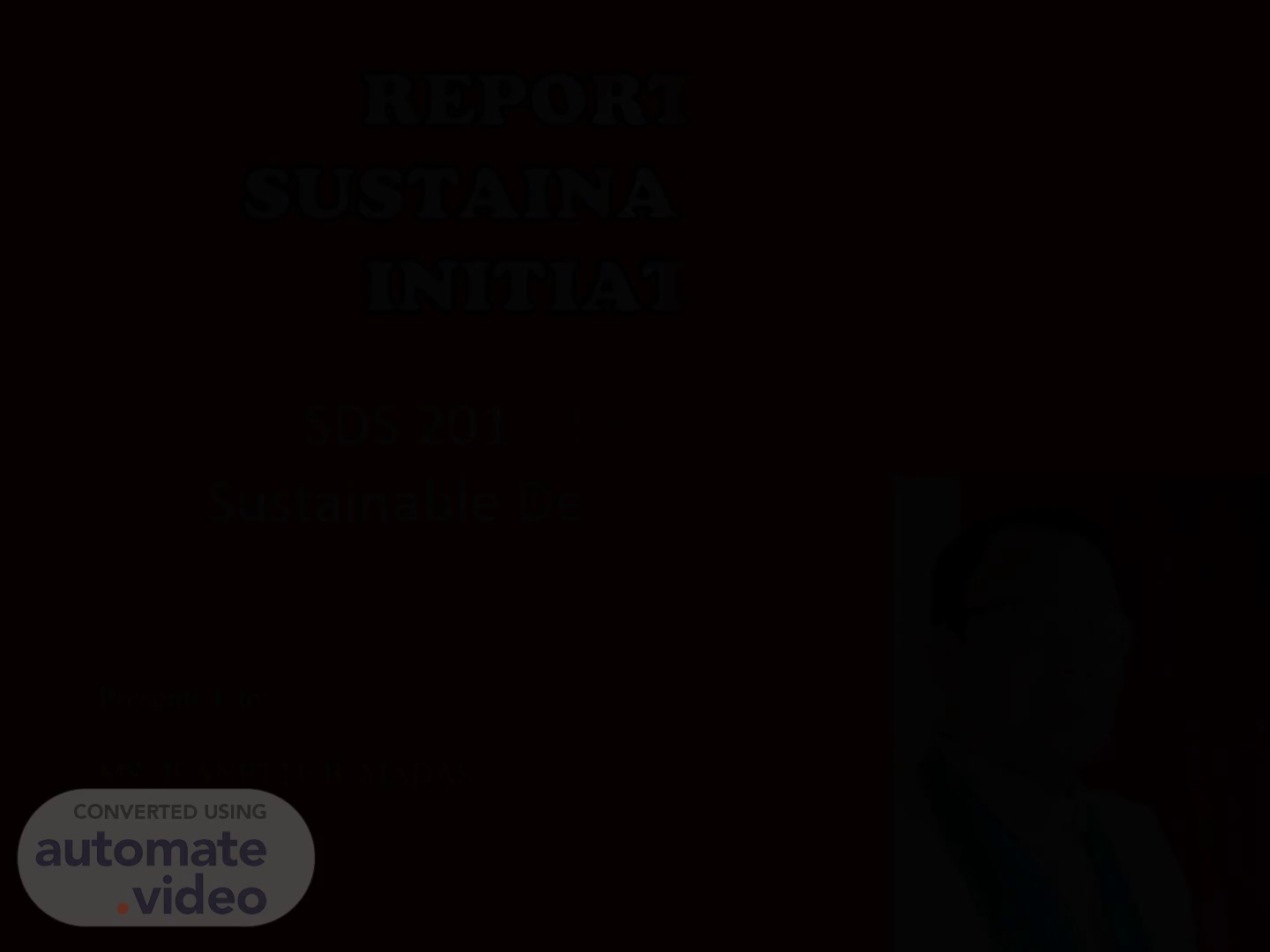
Briefing on Tree Cutting
Scene 1 (0s)
https://mail.google.com/mail/?ui=2&ik=23f7696c03&view=att&th=138dac29eb7561c9&attid=0.1.1&disp=emb&zw&atsh=1.
Scene 2 (32s)
[Audio] Jerric B. Labor, a DiSDS student, conducted a sustainability initiative which aimed to address a local challenge through the implementation of value frameworks known as the Recognition of Individual Property Rights, or RIPR, within a community-based forest management agreement. By identifying the individual rights of the local community, or indigenous people, this framework sought to collaboratively resolve the environmental, economic, and social issues present in the area. The initiative was evaluated over a four-month period and the results showed that the RIPR framework was successful in addressing the identified challenge. The findings were presented to Ms. Jeanette B. Madas, Professor..
Scene 3 (1m 15s)
[Audio] Jerric B. Labor's sustainability initiative has earned the recognition of Individual Property Rights through the DENR forestry tenure known as the Community-Based Forestry Management Agreement. This initiative grants exclusive authority to the landowners or occupants to decide how the land is utilized, and affords them a legal entitlement to use, control, develop, and possess the resource. It is aligned with the organization or community's overall goals and values, enhancing economic efficiency and enabling proper and efficient allocation of resources..
Scene 4 (1m 48s)
[Audio] Individual Property Right is the sole right of a farm land occupant to determine how it is to be used. Furthermore, it enforces peaceful possession, control and enjoyment of their land within the forestry tenured area. Moreover, this right offers a legal authorization to use, control, develop, use and own a resource, including land tenure or other tenured land property. This right is meant to further economic efficiency by forming markets for wares and services and permitting for the appropriate and productive assignment of resources..
Scene 5 (2m 23s)
[Audio] This report presents the findings of a sustainability initiative conducted by Jerric B. Labor, a DiSDS student, and presented to Ms. Jeanette B. Madas, Professor. The initiative looks at the establishment of a community-based forest management system as a tool for sustainable development. Legal frameworks in place to support this effort include EO 318, Section 2.3.1, which provides the commitment of the government to use the Community Based Forest Management (CBFM) as the primary strategy for forest conservation and development activities. This commitment is further strengthened by a series of documents such as DAO 1996-29, DMC 1997-12, EO 263 and DAO 2004-29. These documents, taken together with EO 318, provide the legal basis for this initiative, as well as tenant security and incentives for the local community, represented by the People’s Organizations, to develop, utilize and manage specific portions of forest lands within the Community Resource Management Framework..
Scene 6 (3m 31s)
[Audio] Jerric B. Labor, a DiSDS student, conducted a sustainability initiative and presented the findings to Ms. Jeanette B. Madas, Professor. The initiative was the implementation of a Community-Based Forest Management (CBFM) Program. This program works to provide a setting for marginalized upland communities to access resources and thereby better their socio-economic condition. On top of this, it decentralizes and devolves forestland management while taking care to preserve biodiversity and continue offering environmental services. This program also ensures that these advantages are extended to either on-site or off-site communities..
Scene 7 (4m 13s)
1. Overlaying of Maps to Produce the Community Base Map.
Scene 8 (4m 39s)
THANK. YOU!. [image] 04. 8. [image] growingtree2.